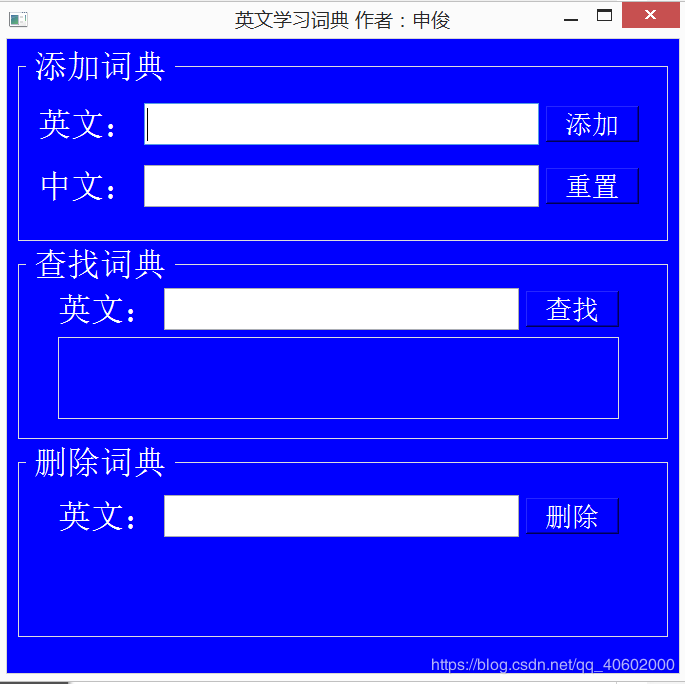Python实现的密码强度检测器示例
本文实例讲述了Python实现的密码强度检测器。分享给大家供大家参考,具体如下:
密码强度
密码强度如何量化呢?
一个密码可以有以下几种类型:长度、大写字母、小写字母、数字以及特殊符号。
显然,密码包含的特征越多、长度越长,其强度也就越高。
我们设置几个等级来评测密码强度,分别是:terrible, simple,
medium, strong。
不同的应用可能对密码强度的要求不一样,我们引入最小程度(min_length)和最小特征数(min_types),作为可配置选项。
这样我们就可以检测密码包含的特征,特征与密码之间的关系可以简单定义为:
| 特征数 | 强度 |
|---|---|
| 小于最小长度 | terrible |
| 常用密码或规则的密码 | simple |
| 小于最小特征数 | medium |
| 大于或等于最小特征数 | strong |
另:常用的1万个密码点击此处本站下载。
代码实现
check.py
# coding: utf-8
"""
check
Check if your password safe
"""
import re
# 特征
NUMBER = re.compile(r'[0-9]')
LOWER_CASE = re.compile(r'[a-z]')
UPPER_CASE = re.compile(r'[A-Z]')
OTHERS = re.compile(r'[^0-9A-Za-z]')
def load_common_password():
words = []
with open("10k_most_common.txt", "r") as f:
for word in f:
words.append(word.strip())
return words
COMMON_WORDS = load_common_password()
# 管理密码强度的类
class Strength(object):
"""
密码强度三个属性:是否有效valid, 强度strength, 提示信息message
"""
def __init__(self, valid, strength, message):
self.valid = valid
self.strength = strength
self.message = message
def __repr__(self):
return self.strength
def __str__(self):
return self.message
def __bool__(self):
return self.valid
class Password(object):
TERRIBLE = 0
SIMPLE = 1
MEDIUM = 2
STRONG = 3
@staticmethod
def is_regular(input):
regular = ''.join(['qwertyuiop', 'asdfghjkl', 'zxcvbnm'])
return input in regular or input[::-1] in regular
@staticmethod
def is_by_step(input):
delta = ord(input[1]) - ord(input[0])
for i in range(2, len(input)):
if ord(input[i]) - ord(input[i - 1]) != delta:
return False
return True
@staticmethod
def is_common(input):
return input in COMMON_WORDS
def __call__(self, input, min_length=6, min_type=3, level=STRONG):
if len(input) < min_length:
return Strength(False, "terrible", "密码太短了")
if self.is_regular(input) or self.is_by_step(input):
return Strength(False, "simple", "密码有规则")
if self.is_common(input):
return Strength(False, "simple", "密码很常见")
types = 0
if NUMBER.search(input):
types += 1
if LOWER_CASE.search(input):
types += 1
if UPPER_CASE.search(input):
types += 1
if OTHERS.search(input):
types += 1
if types < 2:
return Strength(level <= self.SIMPLE, "simple", "密码太简单了")
if types < min_type:
return Strength(level <= self.MEDIUM, "medium", "密码还不够强")
return Strength(True, "strong", "密码很强")
class Email(object):
def __init__(self, email):
self.email = email
def is_valid_email(self):
if re.match("^.+@(\\[?)[a-zA-Z0-9\\-\\.]+\\.([a-zA-Z]{2,3}|[0-9]{1,3})(\\]?)$", self.email):
return True
return False
def get_email_type(self):
types = ['qq', '163', 'gmail', '126', 'sina']
email_type = re.search('@\w+', self.email).group()[1:]
if email_type in types:
return email_type
return 'wrong email'
password = Password()
test_check.py: 用于单元测试
# coding: utf-8
"""
test for check
"""
import unittest
import check
class TestCheck(unittest.TestCase):
def test_regular(self):
rv = check.password("qwerty")
self.assertTrue(repr(rv) == "simple")
self.assertTrue('规则' in rv.message)
def test_by_step(self):
rv = check.password("abcdefg")
self.assertTrue(repr(rv) == "simple")
self.assertTrue('规则' in rv.message)
def test_common(self):
rv = check.password("password")
self.assertTrue(repr(rv) == "simple")
self.assertTrue('常见' in rv.message)
def test_medium(self):
rv = check.password("ahj01a")
self.assertTrue(repr(rv) == 'medium')
self.assertTrue('不够强' in rv.message)
def test_strong(self):
rv = check.password("asjka9AD")
self.assertTrue(repr(rv) == 'strong')
self.assertTrue('很强' in rv.message)
# 测试邮箱
def test_email(self):
rv = check.Email("123@gmail.com")
self.assertEqual(rv.is_valid_email(), True)
def test_email_type(self):
rv = check.Email("123@gmail.com")
types = ['qq', '163', 'gmail', '126', 'sina']
self.assertIn(rv.get_email_type(), types)
if __name__ == '__main__':
unittest.main()
PS:这里再为大家提供两款相关在线工具供大家参考使用:
在线随机数字/字符串生成工具:
http://tools.jb51.net/aideddesign/suijishu
高强度密码生成器:
http://tools.jb51.net/password/CreateStrongPassword
更多关于Python相关内容感兴趣的读者可查看本站专题:《Python数据结构与算法教程》、《Python Socket编程技巧总结》、《Python函数使用技巧总结》、《Python字符串操作技巧汇总》、《Python入门与进阶经典教程》及《Python文件与目录操作技巧汇总》
希望本文所述对大家Python程序设计有所帮助。
